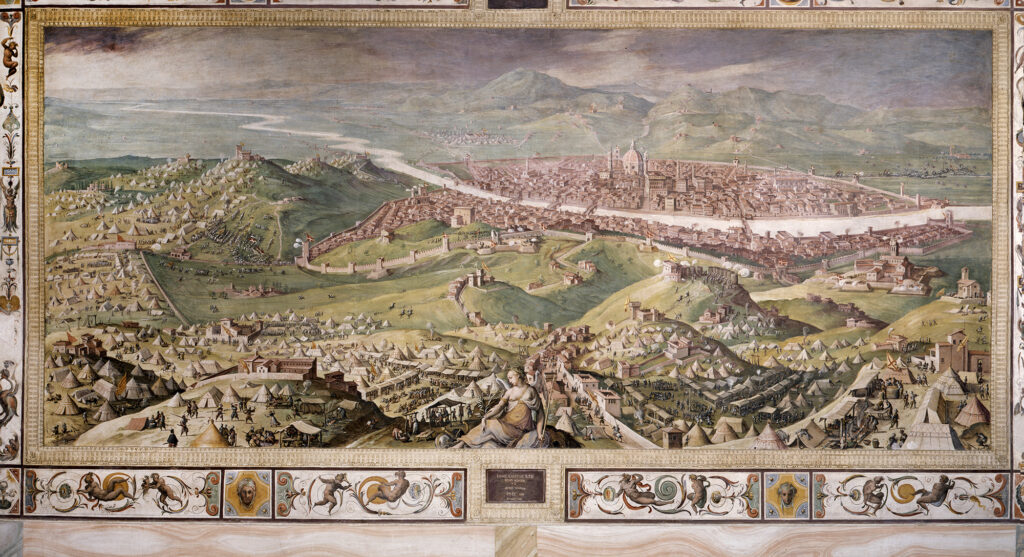In 1494 the Medici control of the republican government came to an end, with the flight from the city of Lorenzo the Magnificent’s son, Piero, who was accused of not having opposed the occupation of Florence by the French king, Charles VIII. After the departure of the French troops, a theocratic government inspired by the Dominican Girolamo Savonarola took power and promoted a widening of citizens’ participation in public affairs. The Major Council, instituted in 1494 and endowed with wide-ranging powers, nominally counted about 3600 members; to host the meetings, a large hall was built in a very short time at the back of the Palazzo dei Priori – later transformed into today’s Salone dei Cinquecento – which constituted the first nucleus of the sixteenth-century expansion of the complex. After Savonarola’s excommunication and death sentence in 1498, the republican regime went through various phases of adversity, until in 1512 Cardinal Giovanni dei Medici, elected pope the following year under the name of Leo X, regained control of the city. Another Medici pope, Clement VII, provoked a rebellion in Florence in 1527 because of his ambiguous policy towards Emperor Charles V, who sent an army into the peninsula threatening the city and sacking Rome. The new Florentine republic immediately had to face the renewed alliance between the pope and the emperor, who pledged to return the city to Clement VII. The Imperial siege of 1529-30 put an end to republican freedoms and ultimately resulted in the appointment of Alessandro de’ Medici as Duke of Florence.

Giovanni Stradano, L’assedio di Firenze, Palazzo Vecchio
The tensions arising in these decades posed the problem of adapting the city’s defences, now unsuited to coping with new offensive techniques based on the use of artillery. The first operations preceded the re-establishment of the republic and concerned the changing of the gates and towers of the walled circuit. Other interventions, including the construction of bastions to defend the main gates, were carried out by the new Florentine republic. In 1529, shortly before the siege, they proceeded to raze the terrain around the city, destroying all buildings, vegetation and crops, so as not to offer shelter to the besiegers. The agglomerations that had sprung up outside the city walls were also demolished, including the populous villages of San Gallo, San Frediano and Sand Niccolò. It was also decided to cut off an entire sector of the city, the one inside the gate at San Pier Gattolini – today known as Porta Romana – with a long rampart built by compacting large masses of earth. The new wall literally divided the Oltrarno in two, leaving the more peripheral area exposed to enemy artillery. The hill of San Miniato, which dominates the city from the south, was also fortified.
In the years following the Medici reconquest of the city, the fortifications sketched out for the siege were improved and strengthened. Alessandro de’ Medici ordered the construction of a large fortress straddling the northern city walls, the fortress of San Giovanni, which was both a defence against external attacks and a deterrent against internal revolts. Indeed, the keep, which incorporated the fourteenth-century Porta Faenza, had its cannon facing the city. After Alessandro’s assassination in 1537, his successor Cosimo de’ Medici continued the work, transforming the bastions inside the Oltrarno walls into a complex defensive front, confirming and consolidating the reduction of the urban fabric in this part of the city. The bastions of San Pier Gattolini remained for a long time as a caesura in the city topography, determining the lower building density and more rural character that this area still retains today. One of them is still visible today inside the Torrigiani garden; another was used to create the Corsi garden

